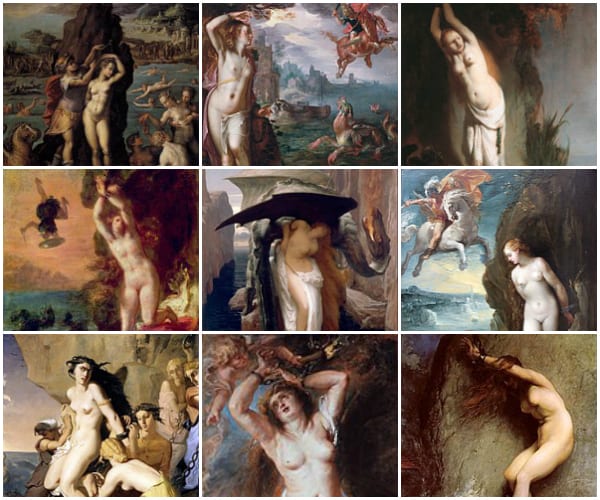Andromeda: the original damsel in distress
Andromeda: the original damsel in distress
Andromeda: the original damsel in distress
-
Hannah
-
Hannah


For my latest novel Aphrodite’s Tears, I took inspiration from the stories of the Ancient Greeks. Interwoven within the narrative you’ll find reference to plenty of Greek myths. But one story you won’t find is that of Andromeda.
The poet Ovid tells us that Andromeda was the daughter of Cepheus, ruler of Aethiopia, and his wife Cassiopeia. Cassiopeia was terribly vain, which would be her downfall – and would bring a terrible fate upon Andromeda. When you boast that you and your daughter are more beautiful than the nymph daughters of the sea god Nereus, it turns out that you annoy Poseidon, ruler of the sea.
Poseidon began to flood all of Aethiopia to punish arrogant Cassiopeia. In a panic, she and Cepheus went to see an oracle, who said that in order to appease the gods of the ocean, they must offer Andromeda up as sacrifice. Faced with a choice between their daughter and their kingdom, they chose their kingdom.
Poor Andromeda, the innocent in the tale, was stripped naked and chained to a rock by the sea, where it was expected that the sea monster Cetus – a giant serpentine fish – would find her and take her.
However, that was not the end of Andromeda’s story, for a hero, Perseus, came across Andromeda on the rock. Perseus was a monster-slayer; he had just slain Medusa. He made short work of Cetus, and he freed Andromeda from her chains. Then he took Andromeda as his wife, and together they had seven sons and two daughters.
When Andromeda died, the goddess Athena made her a constellation in the sky, near to Perseus (and, incidentally, Cassiopeia, whom Poseidon had chained to a throne in the sky for all eternity – and no man came to free her from her chains).
The story of Andromeda has endured for thousands of years, retold over and over in plays, poems and artworks. Featured with this article is a collage of paintings from the 16th to 19th centuries, by artists as notable as Titian, Rembrandt and Rubens.
What is it about the story that has captured imaginations for so long? It comes down to the relative roles of the hero and heroine. Andromeda is the original damsel in distress, requiring rescue from the monster (dragon) by the strong and courageous knight, Perseus – and once he has proved his valour and she has proven her gratitude, the two are a love match.
At the start of this article, I noted that the story of Andromeda does not feature in Aphrodite’s Tears. Do you see why? I love that Perseus is brave and that he risks his own life to save Andromeda’s and then commits to her for a lifetime. But I prefer to write heroines that are not damsels in distress, but are strong, independent women who shape their own destinies. When it comes to facing monsters, Oriel in Aphrodite’s Tears would not stand back and watch Damian battle alone. She would stand with him, shoulder to shoulder, as his equal.
I am not sure if my son’s naming of my granddaughter, Andromeda was from mythology, the constellation or the galaxy. Every time I asked he would laugh and not answer.